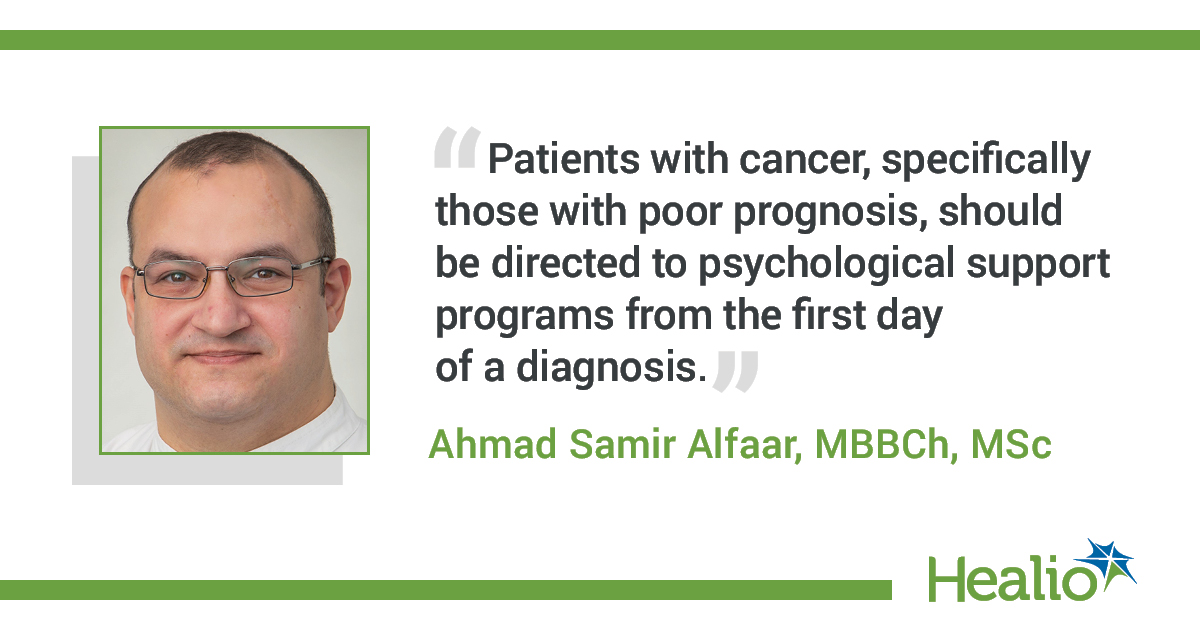Suicide risk higher within 1 year of brain cancer diagnosis
Risk for suicide appeared higher among individuals within the first year of a brain cancer diagnosis compared with the general population, according to a research letter published in JAMA Network Open.
“We have been studying the causes of death during cancer management, especially those reported as noncancer-related, and we noticed that patients with tumors of worse prognosis showed a higher risk for suicide even before the start of treatment,” Ahmad Samir Alfaar, MBBCh, MSc, researcher at Leipzig University in Germany, told Healio. “Last year, data evolved highlighting the association between brain tumors and mental health, and we decided to further investigate this point.”
Alfaar and colleagues used the SEER database to analyze suicide rates among 87,785 patients with brain cancer diagnosed between 2000 to 2016. They obtained overall U.S. population mortality data from the National Center for Health Statistics.
The researchers determined change in suicide risk after brain cancer diagnosis compared with the overall population by calculating the observed to expected (O/E) event ratio, with the expected number of events equal to the number of people estimated to die of the same cause in a demographically similar general population during the same time frame.

Results showed that within the first year of brain cancer diagnosis, 29 patients (0.03%) died by suicide, whereas 33,993 (38.7%) died of cancer and other causes. The O/E ratio for suicide risk was 3.05 (95% CI, 2.04-4.37).
The majority of patients who died by suicide were men (93.1%; n = 27), aged older than 44 years (82.8%; n = 24), white (89.9%; n =26) and had glioblastoma (62.1%; n = 18).
In addition to the significant increase in suicide risk among men (O/E = 3.38; 95% CI, 2.23-4.92) and white patients (O/E = 2.91; 95% CI, 1.9-4.26), researchers also observed an increased risk among patients aged older than 64 years (O/E = 5.04; 95% CI, 2.6-8.8).
“We believe patients with cancer, specifically those with poor prognosis, should be directed to psychological support programs from the first day of a diagnosis, and these programs should involve their families and friends, as well. These plans should be supported by evidence and personalized to address the needs of each patient,” Alfaar told Healio. “Further studies should be conducted to discover the relationship of each treatment milestone and the relation to the timepoints of extreme psychiatric situations among patients with cancer. We now have plans to extend this project.” – by Jennifer Southall
For more information:
Ahmad Samir Alfaar, MBBCh, MSc, can be reached at Leipzig University, Augustusplatz 10, 04109 Leipzig, Germany; email: ahmadsfar@gmail.com.
Disclosures: Alfaar reports no relevant financial disclosures. Please see the study for all other authors’ relevant financial disclosures.
